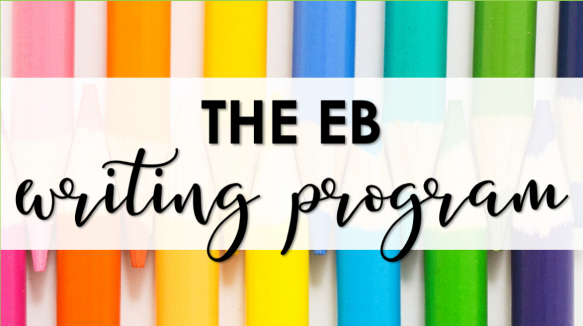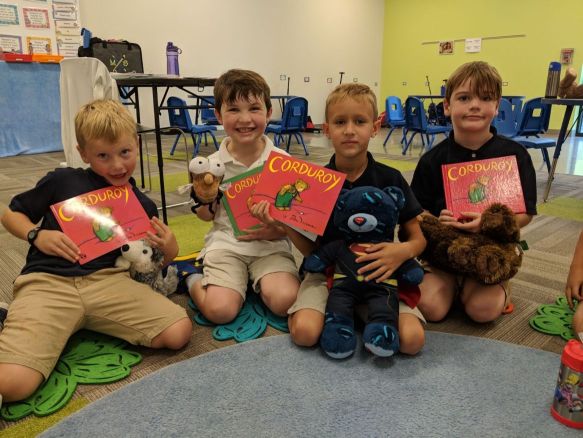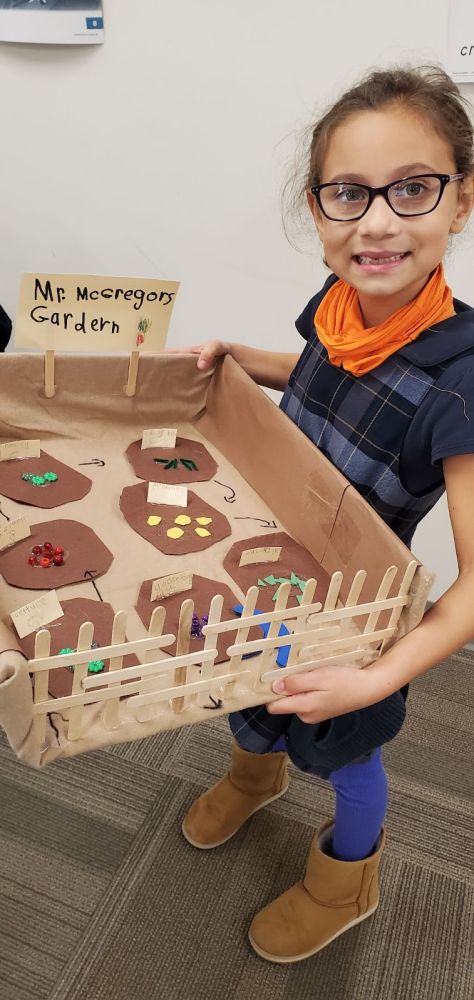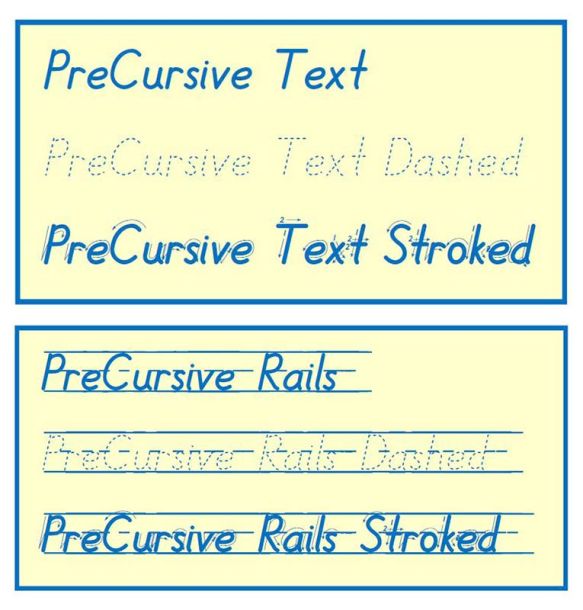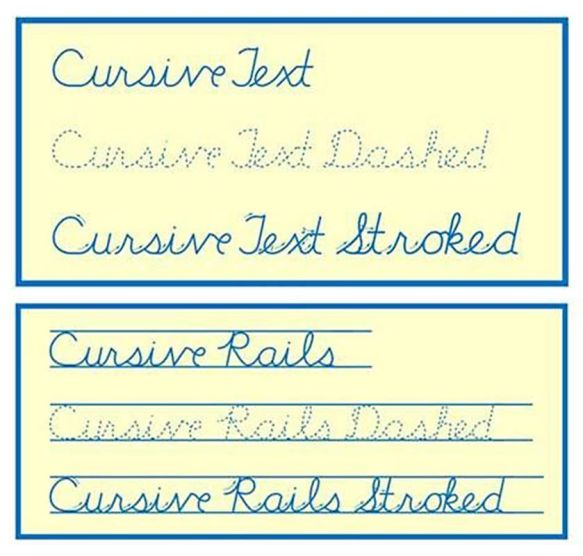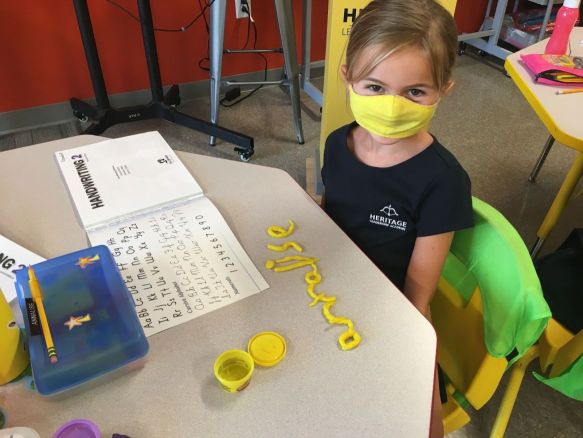English Language Arts (ELA) Curriculum
BJU Focus on the Fives
Focus on Fives starts children on a path for developing learning skills they will need for first grade. Students receive basic age-appropriate introductions to science, social studies, handwriting, phonics, and reading. Fun and exciting learning activities help young students build a foundation in phonemic awareness, reading strategies, listening, and speaking. Worldview shaping begins early with the four key themes addressed throughout the course: God is great, and God is good; God created me and all things; the Bible is God’s Word, and it is true; and I learn in order to serve God and others. Click here for a course overview.
Spelling
HLA uses the BJU Press Spelling curriculum in grades 1-6. BJU Press’s spelling product line equips students to master spelling by recognizing word relationships and structural patterns in grade-appropriate lists. Activities include word study, word sorting, proofreading, dictionary skills, and writing. In the primary grades, word lists contain high-frequency words, phonetic words, and challenge words with irregular spellings. In the intermediate grades, lists add syllable patterns and derivational suffixes. Frequent assessments give opportunities for self-assessment and retrieval practice. They also build student confidence and encourage mastery for producing God-honoring written communication.
Phonics/English and Writing
| 1st grade | BJU Phonics and English 1 |
| 2nd grade | BJU English 2 |
| 3rd grade | Institute for Excellence in Writing: All Things Fun and Fascinating |
| 4th grade | Institute for Excellence in Writing: Fables and Myths |
| 5th grade | Institute for Excellence in Writing: US History based writing lessons |
| 6th grade | EB Academics: EB Writing Program |
BJU Press’s elementary English product line connects skills in writing, mechanics, listening, speaking, and viewing to provide students with a solid English language arts foundation. Students study one part of speech at a time, mastering English conventions through spiral review and regular practice of each skill. Proofreading activities give students practice in analyzing sentences, identifying grammatical errors, and correcting errors within the context of writing. Students follow the writing process to write opinion pieces, informational texts, and narratives. Teacher modeling and student collaboration help students develop their craft as they write in various genres for real-world contexts.
At HLA, we use the BJU Press curriculum to lay the foundation for writing in kindergarten through second grade. In third grade, students transition to a highly structured writing curriculum from the Institute for Excellence in Writing. IEW's unique approach provides the structure that students need to develop confidence in the writing process, while gradually guiding them toward greater independence and creativity. They learn nine structural models (note taking, writing paragraphs, stories, simple reports, writing from pictures, research reports, creative writing, essays, and critiques) to help them organize any type of composition. Additionally, stylistic techniques (strong verbs, quality adjectives, sentence openers, and more) are taught incrementally to gently move students from the basics into more sophisticated writing. For a more in-depth look at the IEW writing process, click here to hear directly from creator Andrew Pudewa.
After learning the mechanics and structure of sentences (in first and second grade) and the structure and style of quality written sentences and paragraphs (in third through fifth grades), students begin to put the pieces together in 6th grade using the EB Writing Program.
A successful middle school ELA curriculum is rooted in writing about literature. To that end, students learn evidence-based writing using the literary-analysis framework from EB Academics. They apply the learned framework to expository writing (descriptive) and master the art of storytelling with the personal narrative. This same framework will guide them into the upper grades as they use the framework for other types of writing such as persuasive, argumentative, compare and contrast, etc.
Reading
HLA uses the BJU Press Reading curriculum in grades 1-6. BJU Press’s elementary reading product line develops student literacy by focusing on literary skills and comprehension strategies. Students build on the phonics foundation laid in the early grades, reading texts of increasing complexity in a variety of genres. Students develop their communication skills through oral and silent reading, responsive writing, and oral presentations. Using the before, during, and after reading process, students learn literary terms, reading strategies, and vocabulary words, and they learn to evaluate all that they read from a biblical worldview.
Because reading is one of our core subject areas and a primary area of focus at the elementary level, we dedicate frequent targeted reading practice on campus and satellite days. Teachers use differentiated reading groups within the classroom to respond to varying levels of proficiency, incorporating targeted skill practice in the areas of letter recognition, phonemic segmentation, decoding, word recognition, oral reading fluency, vocabulary, and reading comprehension. Differentiated reading instruction is also programmed on satellite days as the co-teacher leads instruction.
Sixth grade students continue the BJU Press reading program with the Perspectives in Literature anthology.
Age-appropriate novel studies supplement the BJU Press reading program in every grade level.
Handwriting
| Kindergarten | BJU Focus on Fives (print) |
| 1st grade | BJU Handwriting 1 (print) |
| 2nd grade | BJU Handwriting 2 (cursive) |
| 3rd grade | BJU Handwriting 3 (cursive) |
| 4th grade | Typesy Typing Program |
| 5th grade | Typesy Typing Program |
BJU Press’s handwriting product line guides students as they develop individualized handwriting that is natural, legible, and attractive. Beginning in K5 and Grade 1 with the formation of letters through patterns, students learn to write continuous-stroke letters, the foundation of both our pre-cursive and cursive systems. In Grade 2, students develop a rhythm and flow that eases the transition to cursive writing. In Grades 2 and 3, students will continue to learn and reinforce natural, legible, and attractive handwriting. Activity pages with engaging themes and cross-curricular content give students opportunities to perfect their handwriting through supported practice, practice from memory, and creative writing. Handwriting fonts and styles are shown below.
After having 2 years of print instruction followed by 2 years of cursive instruction, students will begin developing typing skills using an online keyboarding program from Typesy. Students don’t even notice they are working as they sail through this interactive program, building skills as they progress. In most cases, all typing work and practice is done on the satellite campus. Students will continue with Typsey for 2 years, rounding out our 6 year handwriting program. In 6th grade and beyond, students will type the majority of their published works.
We know handwriting is best learned when applied and not taught in isolation. For the most part, the students practically apply the handwriting curriculum when completing writing exercises and assignments within their writing curriculum.




